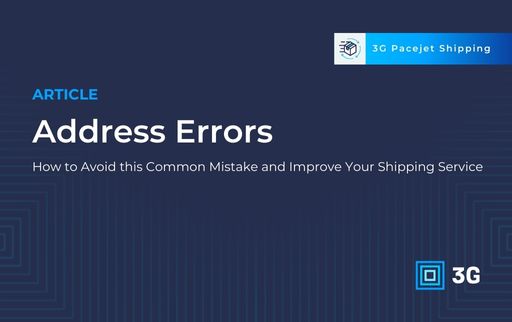Blog
Address Errors – How to Avoid this Common Mistake and Improve Your Shipping Service

Many types of shipping errors only come up in certain circumstances, but improving processes to decrease the rate of address-related errors is something that applies to every shipment. After conducting an audit, finding the source of these errors should be high on the list of priorities.
Common address mistakes
Errors generally fall into one of two categories: the address itself or the address type. The address must be completely correct, including spelling, and the address type must be accurate, indicating whether an address is a residential or a commercial location.
If an address contains an error, it’s likely that the carrier will be unable to deliver the shipment. Delivery will be delayed as the carrier tries to find the issue or escalate the situation back to the shipper. Even when the carrier finds the mistake and delivers the shipment, they typically change an additional fee—an address correction fee. Over the course of several shipments with this error, these fees can add up to a significant amount, making it important to invest in avoiding this type of issue.
The second type of problem is an incorrect address type. In this case, if the address is otherwise correct, the carrier will deliver the shipment but may need to adjust the final shipping cost. Shippers may be stuck with a bigger bill than expected, due to the different rates between residences and businesses, where residential deliveries are generally more expensive.
Furthermore, if the address is marked as commercial when it is actually a residential delivery and a liftgate is required, the carrier won’t be aware to bring a trailer with a liftgate. This creates a delay until the carrier can redeliver to the residential address with the right equipment.
Utilizing technology to avoid address errors
Technology is the best tool to eliminate address errors. It should go without saying that labels and all documentation should be printed, never handwritten, but secondly, at no point in the workflow should addresses be manually retyped. This is why it’s important to have shipping software to automate parts of the labeling and documentation process for you—there’s no risk of keystroke errors (or mistakes from handwriting).
When using shipping software, address validation is the key feature to avoiding the majority of address errors. The validating process checks the address when it is first entered in the system, to flag it immediately if it contains a mistake. This validation is often offered as an API.
Without address validation, there could be relatively minor errors, such as a misspelling of the city or using an adjacent zip code, errors that require more attention from the carrier to fix, such as an incorrect suite number, or there could be problems that prevent the carrier from delivering altogether.
Address validation ensures it is formatted correctly and uses postal standards, which many other carriers use too. Validating can correct a five-digit zip code to nine digits or change a word to the preferred abbreviation. For example, the street suffix “trail” should be abbreviated to “TRL”—the address “123 Forest Trail” is technically ambiguous, as it could refer to “FOREST TRAIL DR” or “FOREST TRL”. It’s details like this that can mean the difference between delays or fast delivery.
When validating addresses, the API can attach additional information about the address that is needed for shipping like the RDI or residential delivery indicator. This indicator flags residential addresses versus commercial locations in your shipping software, so the correct rate is quoted and the carrier has the correct information for the shipment.
An address validation API can be integrated seamlessly with your shipping software and help improve the quality of your data while providing the additional information needed for shipping. This ultimately reduces delays and delivers a better quality of service to meet the shipping demands of your customers.







